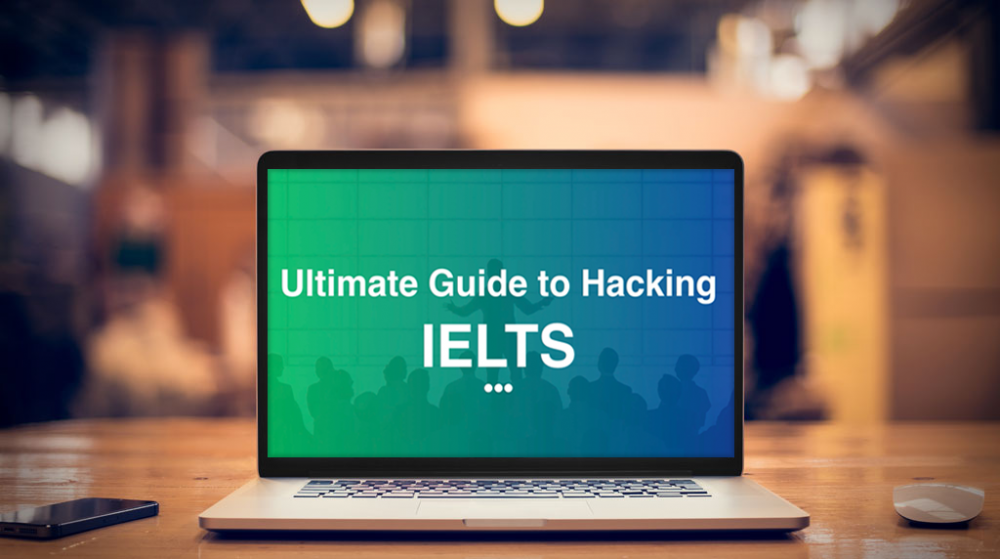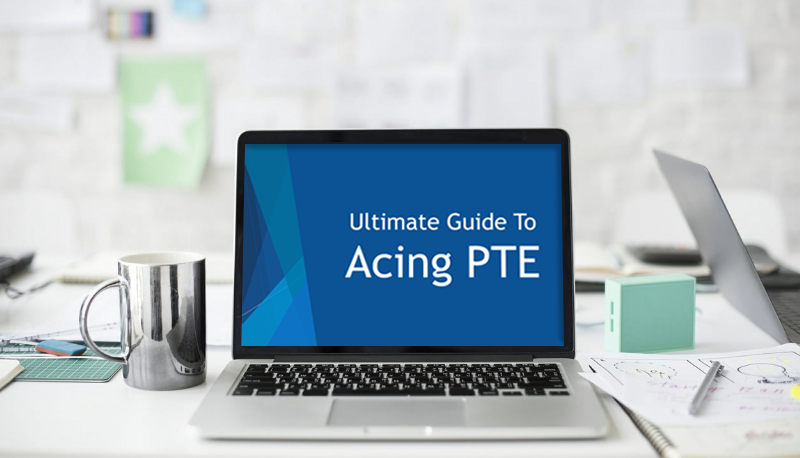
In 2015, when I decided to apply for my Australian PR, I found out that there is so much misinformation floating around that it becomes very difficult to apply for PR without hiring migration agent.
I did not want to waste $2000+ on hiring migration agent so I read every blog, every forum, and every website out there on Australia. I educated myself and then created a step-by-step process to Australian PR for myself.
I got my Australian PR in 2016… in just 5 Days after applying!
In this post, you will learn:
- What is the Skilled Migration Program to become Australian PR?
- Which is the best visa for Accounting degree holders?
- 4 major concerns you have about the PR process
- Why this is the best time to move to Australia?
- Step-by-Step process to apply for Australian PR through Australian Government’s online portal
Don’t have time now? I have created a FREE downloadable version, Ultimate Guide To Australian PR For Accountant, for you to use.
WHAT IS THE SKILLED MIGRATION PROGRAM TO BECOME AN AUSTRALIAN PERMANENT RESIDENT (PR)
Skilled Migration Program is the official name given by Australia Government to what is generally called Australian PR. It is essentially a 5-year visa to live and work in Australia as an Australian Resident.
If a PR holder completes at least 4 years living in Australia, then he/she is eligible to apply for citizenship.
Skilled Migration Program is a points-based system.
It means you need to score at least 65 points on their criteria to be able to apply.
Let’s see what does it mean to have an Australian PR:
- You can stay in, or travel in and out of, Australia indefinitely during the 5-year period
- You can work and study in Australia
- You can enroll in Medicare – free healthcare program
- You can apply for Australian Citizenship
- You can sponsor your family members for Permanent Residence as well
- And you don’t need a visa to visit New Zealand 😉
WHAT IS THE BEST VISA FOR ACCOUNTING DEGREE HOLDERS
The visa type that I decided to apply for is called Skilled – Independent Visa (subclass 189). This is what I call the King of all visas.
It allows the visa-holder to live and work in any city in Australia.
There are two other closely related visas that you can apply for as well:
- Skilled – Nominated Visa (subclass 190) which can be applied even at 60 points instead of 65 because you get 5 points automatically from state sponsorship. Unlike for 189 visa, the visa-holder of 190 visa is required to stay in a certain state for 2 years.
- Skilled – Work Regional Provisional Visa (subclass 491) which can be applied at just 50 points because you get 15 points automatically from either state sponsorship or nomination by a family member who already lives in Australia as a PR or a citizen. Unlike 189 visa, this is not a PR visa, but during your 5-year stay here on this visa, you can apply for PR.
Both these visa have exactly similar process to apply as that of 189 visa, so everything that is given in this post applies for all the visas.
4 MAJOR CONCERNS YOU HAVE ABOUT THE AUSTRALIAN PR PROCESS
Concern # 1: Is getting PR a competitive process or will I get it?
It’s not a competitive process once you understand how the quota works.
On 1st July of each year, Australian Government releases quota (known as Occupation Ceiling) for each profession.
Table below shows the occupation ceilings from 1st July 2019 to 30 June 2020 for Accounting & related fields:
Occupation Ceilings from 1 July 2019 to 30 June 2020
| Field | Occupation Ceiling |
| Accountants | 2746 |
| Auditors, Company Secretaries & Corporate Treasurers | 1552 |
| Actuaries, Mathematicians & Statisticians | 1000 |
| Economists | 1000 |
Here’s the full list of Occupation Ceilings being updated real-time on the Australian Government’s website.
Concern # 2: Can I get Australian PR if I have no job experience in Accounting field?
Job experience is only relevant if you have one-year Australian experience or 3 year foreign experience for extra points for PR, otherwise you are fully eligible to apply for PR without experience.
Concern # 3: How long does it really take to get Australian PR?
If you have required points and meet the relevant criteria, then it can take anywhere between few weeks to a few months. But can take more than a year on low points. It has to be noted that Accounting is an extremely competitive field and thus requires high points for even initial consideration.
Before this critical process, there are 2 steps (IELTS/PTE exam and Skills Assessment) that will take you 8-10 weeks to complete depending on how you pace it.
Concern # 4: How much does it cost to get Australian PR?
The major cost is actual visa cost which is AUD 4045. But the good news is that it has to be paid only AFTER Expression of Interest (EOI) has gotten accepted.
Before this cost, there are two small costs:
– IELTS or PTE registration fees ~ AUD300
– Skills Assessment fees to IPA/CPA/CAANZ ~ AUD500-700
The above two costs are your actual investments before you get PR.
Concern # 5: Is ACCA and CIMA recognized in Australia?
Since ACCA and CIMA are two of the most recognized qualifications, both the qualifications are fully recognized in Australia for migration purposes. For CIMA, applicants should have passed the professional levels of CIMA and hold chartered Status.
If the applicants don’t have an undergrad degree, that status would be provided by Accountant Skills Assessment body (IPA/CPA) after reviewing qualifications and documentations.
International qualifications like ACCA and CIMA are recognized as being beyond undergrad level and thus can be used for Australian Immigration purposes.
WHY THIS IS THE BEST TIME TO MOVE TO AUSTRALIA
2 Reasons:
1) It is the easiest first world country at the moment that is giving PR to people from third world countries.
Getting Australian PR means you can get citizenship after 4 years of living here.
2) Even though Australia is the easiest first world country to migrate to, it is getting difficult every year.
I’ve been tracking it for the past 3 years, collecting data points to analyse the trend. As job markets are getting more saturated, population is rising, major cities are filling up, and supply (number of people applying for PR) is increasing, we are seeing that it’s getting more difficult every year.
Before July 2018, you could get PR at 60 points for several fields, now it’s minimum 65 points to apply.
Moreover, Australia recently removed an entire class of visa which employers used to bring labor from third world countries.
Finally, since 2018 about 200 job categories have been removed from a list of 650. This means that not all professions are welcomed anymore. Accountants have survived the removal of job categories, but will they survive another year, two or four?
STEP-BY-STEP PROCESS TO APPLY FOR AUSTRALIAN PR
Table below summarizes how points are calculated for Expression of Interest (EOI).
| Category | Points | ||
| Age | |||
| 18-24 years old | 25 | ||
| 25-32 years old | 30 | ||
| 33-39 years old | 25 | ||
| Overseas or Australian Degree | |||
| Bachelors or Masters Degree | 15 | ||
| Australian Study (Degree or Diploma) | |||
| Studied in Australia for at least 2 years | 5 | ||
| Work Experience (in Accounting field) | Outside Australia | Inside Australia | |
| Less than 3 years | Less than 1 year | 0 | 0 |
| 3 to 4 years | 1 to 2 years | 5 | 5 |
| 5 to 7 years | 3 to 4 years | 10 | 10 |
| 8 to 10 years | 5 to 7 years | 15 | 15 |
| IELTS band / PTE score | |||
| 6 or 6.5 band / 50 to 64 score | 0 | ||
| 7 or 7.5 band / 65 to 78 score | 10 | ||
| 8, 8.5 or 9 band / 79 to 90 score | 20 | ||
| Spouse Points | |||
| Unmarried | 10 | ||
| Spouse with 6 Band (IELTS) / 50 Score (PTE) | 5 | ||
| Spouse with 6 Band (IELTS) / 50 Score (PTE) + Relevant Skills Assessment | 10 | ||
| Professional Year in Australia | 5 | ||
| Community Language Certification in Australia (NAATI) | 5 | ||
The above table is what applicants have to play with to reach 65 points.
Step 1: Take IELTS or PTE exam
I never used to speak English until I was 20. So this step really scared me at first.
My first thought was, ‘Oh man, do I really need to take IELTS exam?’, and my second thought was, ‘Is there a way I can skip it?’ To this, the simple answer is No, IELTS is mandatory.
Since 2018, however, there are other tests that can be used in place for IELTS, such as PTE, but it is compulsory to prepare and take an English test.
The good news is (Yes, there is good news as well) that only IELTS General Training Test is required, which is much simpler than Academic Training.
IELTS test has 4 components: Reading, Listening, Writing and Speaking.
In order to get 10 points towards total score, you need to have at least 7 score in each of the 4 components.
In order to get 20 points towards total score, you need to have at least 8 score in each of the 4 components.
Just google ‘British Council IELTS register’ in your city and chose a date for 1 month in advance.
1 month is more than enough time to prepare for IELTS. If you give yourself 2 or 3 months, you will still be preparing in the last month only. Human psychology!
I scored 8.5 Band in IELTS. Here’s my Test Result.
In 2018, I created the smartest online course on IELTS Preparation, called Ultimate Guide to Hacking IELTS, that has since then helped 3000+ people nail their IELTS exam and apply for this PRs.
If you instead decide to take PTE exam, my online course on PTE Preparation, called Ultimate Guide to Acing PTE, has helped 1000+ people ace their PTE exam.
Step 2: Skills Assessment from IPA or CPA (officially known as Migration Skills Assessment)
This is the step to secure 15 points for Bachelors or Masters Degree, and another 5 to 10 points for work experience.
This list below is called Medium and Long-term Strategic Skills List (MLTSSL), highlighting only Accounting related occupations. Applicant is only eligible to apply for 189 visa if the Degree title is closely related to one of these occupations.
| Degree Title | ANZSCO Code |
| Accountant (General) | 221111 |
| Corporate Treasurer | 221212 |
| External Auditor | 221213 |
| Management Accountant | 221112 |
| Taxation Accountant | 221113 |
| Finance Manager | 132211 |
—
- If you are applying for Engineering fields (such as electrical, mechanical, etc.), here is the Ultimate Guide To Australian PR For Engineers.
- If you are applying for ICT-related fields (such as computer science, software engineering, etc.), here is the Ultimate Guide To Australian PR For ICT & Software Engineering.
—
Moving on.
To get Skills Assessed, just follow the steps at IPA or CPA Portal, which are the official bodies designated by Department of Home Affairs, Australia.
All you have to do is:
- Choose occupation name and code from the table above
- Fill the online form at IPA or CPA with degree details and attach the documents they have asked for.
- Attach evidence of work experience (for additional points).
It has to be noted that CPA or IPA assessment is based on subjects and courses you have studied previously. There are certain mandatory courses that must be completed by the applicant when applying for the assessment.
In case any course/subject is missing, the PR applicant would need to undertake that course online and meet the relevant criteria before getting assessed. The details of required courses for each occupation are detailed here.
Once you’ve completed Step 2, you should have your Skills Assessment Certificate ready in 10 days and you can move on to Step 3.
Step 3: Expression of Interest (EOI)
After completing step 1 and 2, you are ready to submit your Expression of Interest (EOI).
EOI is completed online by logging into portal called, SkillSelect.
It is completely FREE to submit and it doesn’t take more than 30 minutes to fill in the information.
To start EOI application, click HERE.
Press ‘Submit an EOI’, and a new window will open.
Started filling in your personal information.
Create your Password by giving email and passport information.
Once done, an EOI ID will be issued to Login anytime and update EOI, even after submitting it.
Selected visa type: Skilled – Independent (Subclass 189)
Enter your IELTS/PTE score, Education qualification, and Employment details.
On the Skills Assessment section, select your nominated occupation, as the one that has been endorsed by IPA / CPA in Step 2.
Select ‘Yes’ for the question asking ‘Does the client have a suitable skills assessment from the relevant assessing authority?’.
No documents are needed to be attached for proof at this stage but reference numbers for both IELTS/PTE and Skills Assessment by ACS have to be provided.
Once you submit EOI, it will show you confirmation with total points.
And then you wait!
It will take anywhere from a week to more than a year depending on your total points.
After you get an email saying your EOI has been approved and you are invited to apply for visa, move to step 4.
Step 4: Visa Application
You will have 60 days after the EOI acceptance invitation to make a visa application online.
To lodge visa application, follow this link to Immigration portal.
Create your ‘username’ and ‘password’ and hop in.
The information you submitted in EOI will already be pre-filled here.
This step is extremely simple as well.
You just have to submit visa application form online which takes 5 minutes to fill as most of the information is repeated from EOI.
Then you attached scanned versions of relevant documents (don’t have to be certified).
Documents Required:
– Positive Skills Assessment evidence by IPA or CPA
– Age (Passport or Birth Certificate)
– IELTS/PTE Result
– Degree & Employment Proof (same as submitted to IPA / CPA in Step 2)
After you attach these documents, press Submit.
After about a month, they might ask for Form 80. This is a bit lengthy form to fill in.
Information to fill in form 80:
- Residential addresses for last 10 years
- Travel history for last 10 years (trick I used to complete this section was to see the stamps and dates of those stamps on my passport)
- Internships and part-time work information
- Parents and siblings’ basic information (name, date of birth, citizenship)
- 2-line answer to why I am travelling to Australia, and why do I want to remain in Australia
This was my 2-line answer:
“I’m a top performer in my field. I can contribute at the highest level in a country which advocates merit. I believe I’ll be an asset to this multi-cultural society Australia is”
This part is lengthy but simple and no extra documentary evidence is required.
Once you submit this form, you will be asked to submit your Police Character Certificate (from countries you have lived in the past 10 years) and also get Medical check-up done from the designated lab in your city.
When you go to the medical place mentioned by the Immigration Authority, they will already know what to do, and they will send the results directly to the Immigration Authority.
And that is it!
After completing Step 4, I got the awesome email with PR in just a month.
Now here I am in Australia 🙂

Through AustraliaYours, I love sharing my experiences that can help my readers save thousands of dollars and many months of effort. I hope this was useful.
P.S. I have created a FREE downloadable version, Ultimate Guide To Australian PR For Accountants, for you to use.


